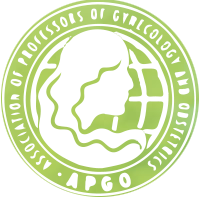The APGO & CREOG Preparation for Residency Curriculum
 As the saying goes, “The journey of a thousand miles begins with a single step.” In the case of residency, it begins with CREOG & APGO’s Preparation for Residency Curriculum.
As the saying goes, “The journey of a thousand miles begins with a single step.” In the case of residency, it begins with CREOG & APGO’s Preparation for Residency Curriculum.
Since the Accreditation Council for Graduate Medical Education (ACGME) Outcome Project shifted the focus of residency accreditation from evaluating a program’s potential to educate to assessing its actual accomplishments, work began on developing milestones that articulate the degree of performance expected of residents at various levels of their training. Together with the Council on Resident Education in Obstetrics and Gynecology (CREOG), APGO has responded to the new mandate by developing a curriculum for preparing medical students for residency. Over the past two years, the joint APGO and CREOG task force has worked on defining the components of the curriculum which address both didactic knowledge and procedural skills in obstetrics, gynecology, and office practice. The Preparation for Residency Curriculum links each knowledge or skill requirement to its associated learning outcome in either the 9th edition of the APGO Medical Student Educational Objectives or the 9th edition of the CREOG Educational Objectives.
So, what’s next? The task force is currently creating a compendium of resources to help educators teach and assess learners entering ob-gyn residency. The toolkit is being compiled from teaching and assessment tools submitted by APGO members and selected by the task force based on their ability to aid academicians as they ensure students meet the standards of a day-one resident. The task force is also working on identifying resources for a reading list, a compilation of suggested reading material to guide students and educators along the path to prepare for residency. Also in the works is an online assessment examination, similar to APGO’s Undergraduate Web-based Interactive Self Exam (uWISE). Learners will take the exam prior to commencing residency to evaluate whether they meet the didactic requirements. APGO Past President and Task Force Co-Chair John G. Gianopoulos, MD, has also suggested exploring the use of the 21 ACOG Simulations Consortium centers across the country as sites where students can demonstrate and be assessed on skill competencies.
And though the project will paint a picture of what a day-one resident should look like, it can’t ensure that all students will fit the mold. Students that are unable to pass the didactic knowledge assessment or skills demonstration will require remediation. Speaking of such a situation, Doctor Gianopoulos said, “They need to achieve competency before they can move on. There will be pressure on the resident, because that will make things difficult for their colleagues and patients if they don’t keep up.” Task force member Randal D. Robinson, MD, added, “Ultimately, as a residency program director, we want to know who needs help at the beginning. So, this [assessment examination] will be a tool that program directors can use.” While the project workload seems unending, this educational overhaul is well underway due to the collaboration and dedication of task force members, numerous ob-gyn organizations, and the individual educators who submitted educational tools and continue to work with the task force to modify and package them for national use. The goal is to implement the new standards and make available the teaching and assessment resources in time for the class of medical students matriculating in 2015. For more information about the project, visit APGO’s Milestone Project page.


